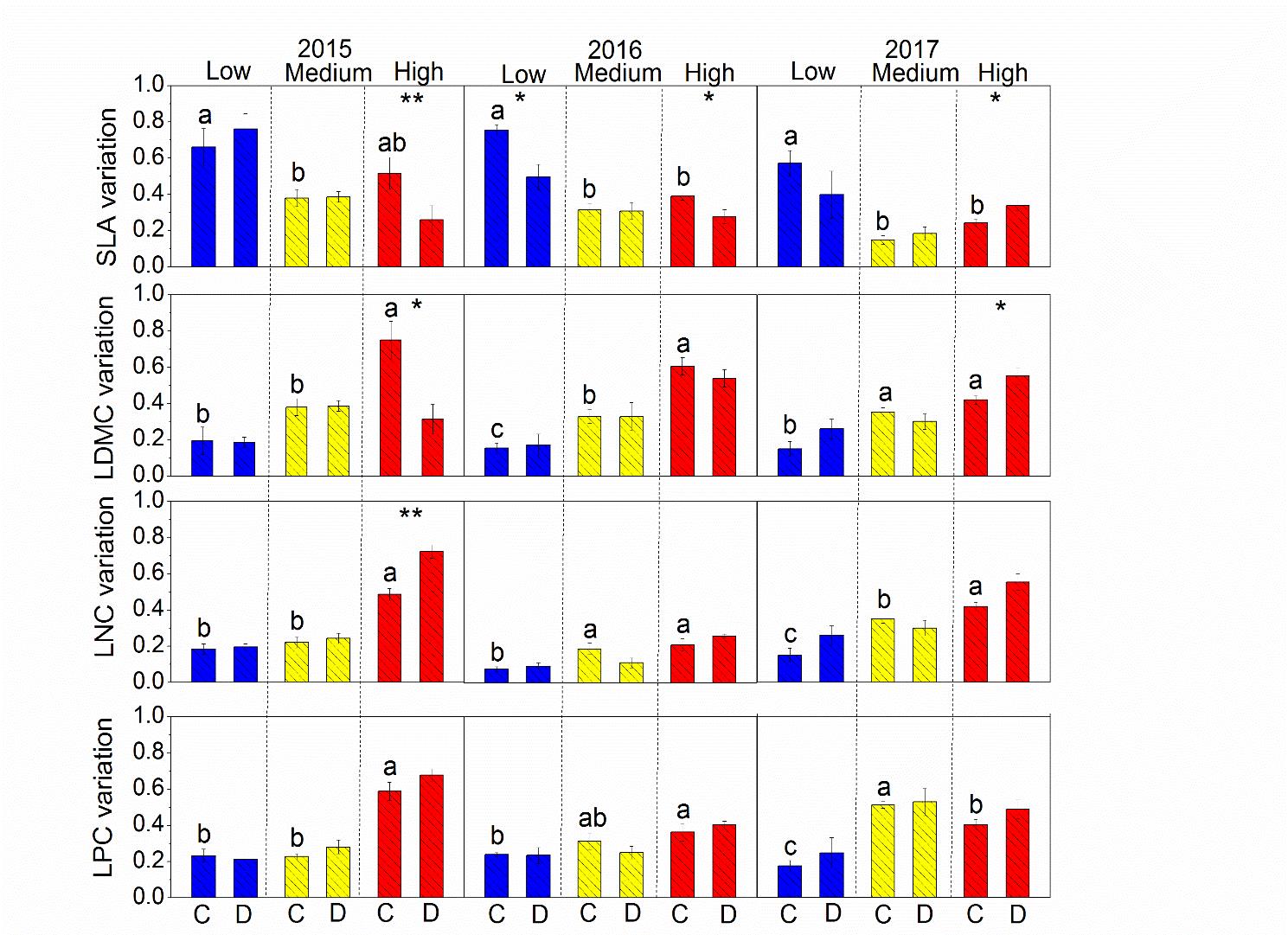Researchers from Institute of Applied Ecology of the Chinese Academy of Sciences report the responses of community-level traits to long-term drought across three grasslands of northern China.
Community stability is a comprehensive feature of plant community structure and function, which is directly related to ecosystem function and service.
In recent years, the frequency and intensity of extreme drought events have been increasing due to the global warming, which has exerted great influences on the structure and function of the ecosystem. Plant community stability is closely related to functional attributes or traits of plant community. Community functional diversity can reflect the community within the functional differences among plants, thus the understanding the response of plant traits to climate change can effectively reflect the adaptation of plants to new environment. Few studies, however, have investigated the response of community-scale traits to extreme drought on broad spatial/temporal scales.
The researchers from Institute of Applied Ecology (IAE), Chinese Academy of Sciences conduct a natural experiment across grasslands with different aridity across in Inner Mongolia), which is based on a three-year' extreme drought treatment and ecological researches. This work analyzed the differences in community responses among grasslands and their mechanisms and discussed the internal processes and mechanisms of community resilience after from the perspective of intra- and inter-specific trait variabilities.
The researchers found that community trait means was less sensitive than community trait variations, suggesting that community trait variations as a component of functional composition may be a better indicator of initial responses community to drought than trait means.
At the high aridity site, trait variation showed greatest changes, which was driven largely by trait variability within species. Community trait variability significantly increased with aridity across sites, largely due to trait variability among species. From the perspective of intra-species and inter-species functional traits, this study emphasized the importance of community trait variation in predicting ecosystem structure and function in response to drought events.
This study, entitled "Long term experimental drought alters community plant trait variation, not trait means, across three semiarid grasslands", has been published at the Plant and Soil journal. This study is supported by funding from National Natural Science Foundation of China and National Key Research and Development Program of China.

Fig 1. Effects of drought (C, control; D, drought) and site (low, medium and high aridity site) on plant community trait variation during the treatment years (2015-2017). SLA, specific leaf area; LDMC, leaf dry matter content; LNC, leaf nitrogen content; LPC, leaf phosphorus content. Each bar represents the mean trait variation with error bars indicating standard errors calculated from replicate plots for each treatment. Different letters indicate significant differences among controls in different sites in each year at p<?0.05. Statistical significance of drought effect in each year is depicted as ** p<0.01 and * p<0.05 (Image by LUO Wentao).
Email: yueqian@iae.ac.cn
Publication Name: LUO Wentao et al.